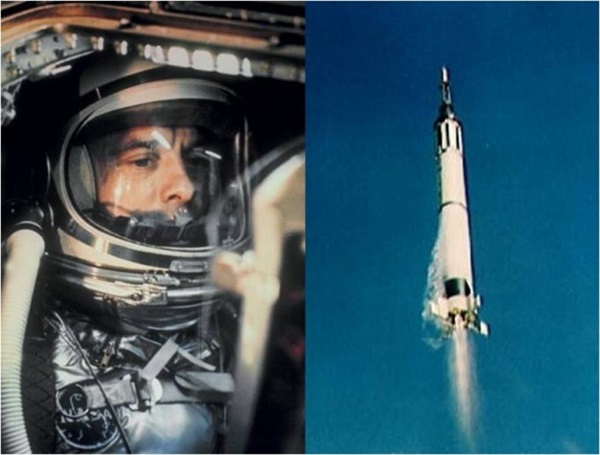In September 1970, Janet Mertz joined the biochemistry department at Stanford University. She was one of only six new graduate students in the department and the first female one admitted in nine years. “I wanted to study viruses as I had been working with bacteriophage lambda during my undergraduate studies. I was both interested in learning how viruses work and in using them as probes to begin to understand how genes are regulated in higher organisms, especially human cells,” Mertz explained.
Mertz chose Paul Berg as her mentor in December 1970 because he was just starting to figure out how to construct recombinant DNA containing simian virus 40 (SV40) that could be replicated and possibly expressed in E. coli. Berg wanted to develop tools to understand gene expression in human cells and its misregulation in cancer. “Studying SV40 seemed like a great system to address all three of my interests: studying a virus, studying how it transforms cells, and beginning to study how genes are regulated in higher organisms,” Mertz said.
Berg suggested that Mertz begin by isolating two of the three-part—trivalent—recombinant DNA molecule he had recently proposed. He wanted the DNA to contain the genetic information encoding most of the functions of SV40, all of the functions of the E. coli galactose (gal) operon, and the minimal parts of bacteriophage lambda required for autonomous replication as a circular DNA molecule, i.e., a plasmid, in E. coli.
Right away, Mertz began working with Douglas Berg, a postdoctoral fellow in her department, to isolate a deleted variant plasmid from bacteriophage lambda that had the gal operon in it. “I then purified this plasmid cloning vector that had the gal operon and showed that I could take the purified DNA and reintroduce it back into E. coli using a method that [Stanford biochemist] Dale Kaiser’s lab had recently developed,” Mertz reported.
To my surprise, this linear form of SV40 DNA was infectious. But when I recovered the SV40 DNA and looked at it, it was no longer linear. It had become super-coiled circular DNA again. And the EcoRI site had regenerated.
—Janet Mertz, University of Wisconsin-Madison
By the spring of 1971, Mertz had the DNA pieces she needed. But Berg’s lab still lacked a method for making this trivalent recombinant DNA. Once introduced into E. coli and replicated there to high copy number, the plan was to purify lots of this recombinant DNA. It could then be transfected back into higher organism cells in culture to see whether expression of the gal operon occurred and to determine what functions of the SV40 life cycle still happened when the cloning vector sequence was inserted at different locations throughout the SV40 DNA genome. Mertz’s interests lay in the latter of these two projects.
The scientific community knew little about SV40 or its supercoiled circular DNA at the time. Therefore, Mertz began a side project looking at the infectivity of different forms of the viral DNA. Another student in Berg’s lab, John Morrow, had just shown that the restriction enzyme EcoRI (that he had obtained from Herbert Boyer’s lab where this enzyme had been discovered) cleaved SV40 DNA once at a unique site. “I knew I could take SV40 DNA, cut it with EcoRI to make it into a linear molecule, and then put it back into monkey cells to see if anything happened,” Mertz explained. “To my surprise, this linear form of SV40 DNA was infectious. But when I recovered the SV40 DNA and looked at it, it was no longer linear. It had become supercoiled circular DNA again. And the EcoRI site had regenerated.”
At the time, scientists assumed that all restriction enzymes probably left blunt ends when they cut DNA because the one restriction enzyme with a cleavage site that had been sequenced to date was blunt. It made logical sense. The restriction system destroys invading DNA in bacteria. Blunt ends offer a good way to destroy DNA. However, Mertz found that her EcoRI-cleaved SV40 DNA functioned just like wild-type circular SV40 DNA.

Janet Mertz began working at the Cold Spring Harbor Laboratory in 1977.
Edward Mertz
From her undergraduate studies, Mertz knew that the bacteriophage lambda virus particle contains its genome in a linear form. “But when it enters E. coli, the linear DNA gets converted to a circular molecule because the viral DNA has sticky—or cohesive—ends,” said Mertz. She hypothesized that this also happened with EcoRI-cut SV40. This turned out to be a defining moment in discovering that cleavage of DNA with the EcoRI restriction enzyme generates cohesive ends.
In the meantime, other researchers in her department, David Jackson and Peter Lobban, figured out how to join together two DNAs in a test tube, with David creating the first recombinant DNA. “These were the recombinant DNAs Berg had proposed, with SV40 joined to the lambda/gal cloning vector. But they needed six enzymes used in combination in various ways and a very complicated procedure. The yield of recombinants was only about 2% using this procedure,” Mertz explained.
Mertz decided to follow up on her hunch about EcoRI creating sticky ends. In April 1972, she incubated EcoRI-cut SV40 DNA with the enzyme E. coli DNA ligase that she had obtained from Paul Modrich, another graduate student in the department. “I ended up with 95% regeneration of circles in a test tube, which was pretty amazing for my very first attempt, without having to first optimize the reaction conditions,” said Mertz.
With this striking result in hand, Mertz turned to new Stanford University assistant professor, Ronald Davis, who had previously looked at the cohesive ends of lambda DNA. Davis prepared EcoRI-cut SV40 DNA for electron microscopy in the cold room instead of at room temperature. He found that a lot of the linearized SV40 DNA was now circles, instead of linears, even without adding DNA ligase, because the ends had hydrogen-bonded in the cold room. This finding proved that EcoRI cutting truly generated cohesive ends.
“When I discovered that I could cut any two DNAs with EcoRI, hybridize them together via their identical sticky ends, and then ligate them together with 95% efficiency, the potentially enormous impact on molecular biology was immediately obvious,” Mertz recalled. “I had publishable data documenting the highly efficient synthesis of SV40-lambda-gal recombinant DNA by the beginning of June 1972, a month and a half after I did my first ligation!”

Janet Mertz currently leads a laboratory at the University of Wisconsin-Madison where she studies regulation of gene expression and how DNA tumor viruses influence cancer development.
Janet Mertz
Mertz’s work laid the foundation for genetic engineering. Together with Boyer, Stanley Cohen’s lab in early 1973 began to use her methods to study bacterial multiple drug resistance factors. Together with John Morrow while he was still a student in Paul Berg’s lab, Cohen and Boyer also used this method, along with their drug-resistance plasmid as a new, improved cloning vector to show that frog DNA could also be replicated and transcribed in E. coli. While Paul Berg received the 1980 Nobel Prize in Chemistry for the first constructed recombinant DNA in vitro, Boyer and Cohen obtained the first patents related to the actual cloning of such molecules.
Because of a moratorium imposed on cloning of virus-encoded oncogenes due to safety concerns that was not lifted until 1979, Mertz had never actually cloned in E. coli the trivalent DNA she had made in 1972. Instead, she developed other methods for isolating and characterizing SV40 mutants for the remainder of her PhD thesis research. Mertz has since gone on to make multiple key contributions, including to our understanding of SV40, hepatitis B virus, and Epstein-Barr virus, regulation of gene expression in mammalian cells, roles played by estrogen-related receptors in breast cancer, and effects of culture on the mathematics performance of females.














